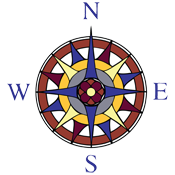American Sign Language (ASL) I *ONLINE/TRANSITION*
Description:
Are you interested in learning a new language that is used right here in America? Are you intrigued by a modern language that has no written form? Do you want to find out why American Sign Language is much more closely linked to French Sign Language than British Sign Language? If so, American Sign Language (ASL) is a great language for you! In this class, students will learn the basic skills in production and comprehension of ASL while covering thematic units such as personal and family life, school, social life, and community. Each unit will include presentations and readings on Deaf culture and Deaf history. Students will learn fingerspelling and numbers, developing conversational ability, culturally appropriate behaviors, and fundamental ASL grammar. Class time will be dedicated to interactive ASL activities and face-to-face signing practice with the instructor and partners.
ASL students will have a Deaf instructor. He regularly teaches all-hearing classes and is an excellent role model for students to meet and interact with a native speaker of ASL and to lean natural facial expressions, gestures, and body language used in Deaf communications. ASL students will have more confidence when they encounter Deaf instructors in college or greet speakers of ASL in social settings. Because the instructor is Deaf, students are not permitted to speak aloud in class. This approach improves visual attention and encourages immersion in the language. Students will be able to ask questions of the instructor by writing on individual white boards, but they will be encouraged to sign in order to communicate with the instructor. Lessons are facilitated with Power Point presentations, and a professional ASL interpreter will assist the class on the first day and in second semester for a Deaf culture lesson. Enrolled students are not expected to know any sign language prior to beginning ASL I.
Hundreds of colleges and universities, including all public institutions of higher learning in Virginia, accept ASL as a distinct foreign language. This allows hearing and Deaf students to fulfill foreign language requirements for admission to college. Teens who have difficulty writing, spelling, or have challenging pronunciation in English, can be successful with ASL as a second or foreign language choice. Penn State University research demonstrated that the visual and kinesthetic elements of ASL helped to enhance the vocabulary, spelling, and reading skills in hearing students.
Note:All class meetings will be in a virtual classroom, providing synchronous online instruction via videoconferencing for fall semester. At the instructors' option, the class may transition to in-person instruction for second semester as COVID-19 scenarios improve.
Workload: Students should expect to spend 2-3 hours each week outside of class on required vocabulary exercises, readings, and signing practice.
Assignments: Homework assignments will be posted online in the Canvas digital classroom platform. There may be some brief written assignments, but for most homework assignments, students will be asked to post short videos of themselves signing. Students will need either a camera phone or webcam to complete these assignments.
Assessments: The instructor will assign points using a class rubric for the parent's use in assigning a course grade. Course rubrics will evaluate students on their sign production, fingerspelling, ASL grammar, facial expressions including “above the nose” grammar (brows and body movement), and “below the nose” modifiers (lip expressions).
Textbook: Students should purchase or rent "Signing Naturally Units 1-6 workbook" (ISBN# 978-1581212105) which includes a DVD or signing videos. This class will cover units 1-4.
Credit: Homeschool families may wish to count this course as a full credit in World Languages for purposes of a high school transcript.
We are sorry but registration for this event is now closed.
Please contact us if you would like to know if spaces are still available.

